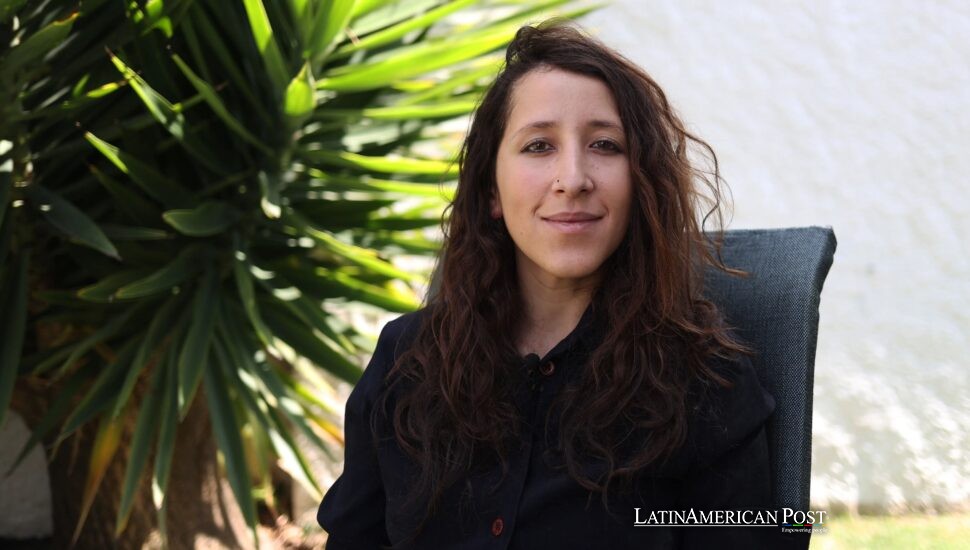Amazon Indigenous Cuisine Reshaping Latin America’s Gastronomy

Chef Marsia Taha uses native Amazonian food. Her work earned her the title of Latin America’s best chef for 2024. She revives old customs, saves nature, and alters views on sustainable cooking for future generations.
The Amazon: A Vast Pantry
In six years, Bolivian chef Marsia Taha entered different natural regions of her country, including the tall mountains of the Andes plus the extensive rainforests of the Amazon. In an interview with EFE at the Galicia Fórum Gastronómico in Spain, Taha described the Amazon as “a vast pantry” harboring over 70% of the products Bolivia can produce. Her exploration has been made possible partly through collaboration with the Wildlife Conservation Society (WCS), an NGO dedicated to preserving biodiversity and empowering local communities.
Taha studies recipes plus ingredients that many Bolivians seldom see or cook. She shows fish such as piranha, wild meat like caiman, plus vegetables from palms to river algae. Her love for these items goes beyond a new taste – it joins a wish to keep native knowledge safe while guarding the forests from which they come. As she told EFE, the Amazon’s lack of extensive road infrastructure makes transporting fresh ingredients from remote communities to urban centers difficult. Sometimes, products must travel by boat, then bus, over precarious terrains. Still, Taha believes the logistical hurdles are worth it. “It means choosing items from this area on purpose,” she said. “This lets Bolivians living at high elevations try the forest food while preserving its supplies.”
This stands out against the current situation, where local farmers and fishers have difficulty finding steady buyers for Amazonian goods. Because transport is weak and cold storage is lacking, key items spoil or go to waste. Taha thinks that this loses a chance not only for new food ideas but also for saving nature and cultural traditions. By pushing these ingredients, she plans to help the local economy and its natural systems while also reviving old customs that risk disappearing with global uniformity.
Reclaiming Tradition and Identity
A deeper goal supports Taha’s care for Amazonian food: she wants to find old cooking ways and raise their value. “My recipes take a step away from usual Bolivian food,” Taha told EFE, as she wished to keep the taste and methods used before European rules came. This emphasis on “pure and unfamiliar” approaches has led her to immerse herself in communities that have retained their centuries-old culinary heritage.
Through field research, Taha has learned how certain indigenous groups transform palm fruits into oil or use roots and wild mushrooms to create dishes of surprising complexity. She says many local recipes depend on respect for the land, built on the idea that the forest will give more if people care for it. She claims this balance offers suitable lessons for Bolivians and the whole world. “It’s not just about cooking,” Taha said, “it’s about respecting the entire cycle—how seeds grow, how animals are hunted sustainably, how nothing goes to waste.”
Her new restaurant, Arami—meaning “piece of sky” in the Guaraní language—embodies this philosophy. Within Bolivia’s busy food scene, Arami serves piranha broth, freshwater algae salad, and mushrooms from the wild. Each dish honors native peoples while providing a taste of new food paths. By selecting ingredients by their availability and advising diners on the cultural significance behind them, Taha hopes to kindle conversations about how Bolivians—and Latin Americans as a whole—relate to the environment.
Taha also believes the platform provided by her recognition as Latin America’s best chef in 2024 places a responsibility on her shoulders to speak candidly about sustainability. She frequently uses “cocina consciente” or “conscious cooking” when describing her approach. To her, it means to go past the plate and meet actual issues about fairness and the natural world next to self. One part sets up fair trade, so native groups get regular pay. The other part teaches the public, so society knows why Amazon’s life, as many as it is, stays weak and requires care.
Women at the Forefront of Culinary Innovation
As a prominent female chef in a male-dominated industry, Taha acknowledges progress and challenges. She told EFE that she has been fortunate in her career, growing up in a “matriarchal” environment that bolstered her self-confidence. Yet she concedes that not all women enjoy the same supportive background, pointing out that many still face discrimination and skepticism when aiming for leadership roles in professional kitchens.
Since forging her path, Taha has noticed more women emerging as trailblazers—top chefs, restaurant owners, and respected food researchers—especially in Latin America. She attributes this wave partially to the visibility that successful female culinarians have gained, motivating others to take similar strides. Nevertheless, Taha maintains there is more work ahead. While she receives accolades as one of the region’s rising culinary stars, she quickly reminds people that her achievements aren’t hers alone. They stem from collective knowledge shared by Amazonian women who pass down recipes, choose how to hunt or cultivate responsibly, and serve as gatekeepers to one of the planet’s most varied landscapes.
“I see myself as a messenger,” Taha explains. “A messenger of flavors, stories, and resilience. It’s my job to take what I learn from these communities and bring it to the rest of the world.” Whether she’s perfecting a dish that originated in the depths of the rainforest or speaking at forums in Europe about the Amazon’s gastronomic potential, Taha’s broader objective remains the same: to defend indigenous traditions while demonstrating that sustainable practices can power Latin America’s next culinary revolution.
She envisions an interconnected culinary future—where local markets across Bolivia and neighboring nations adopt Amazonian ingredients to preserve land and livelihoods. If the idea works, Taha thinks these native flavors could slowly cross borders, ensuring the Amazon’s nature stays whole. “It is a hard goal,” she says, “but one worth trying if we wish future people to enjoy what the forest has provided over many years.”
Also Read: Buena Vista Social Club Lights Broadway With Afro-Cuban Beats
By weaving the stories of Indigenous communities, sustainable sourcing, and the growing influence of women in gastronomy, Taha captures a broader Latin American narrative—one in which the lush, resource-rich Amazon holds the key to innovative culinary expressions and ethical ecological practices. Through her work at Arami and elsewhere, she gives a clear view of how tradition helps progress. This shows that a careful search of the region’s many supplies may offer a plan for a fairer future.





